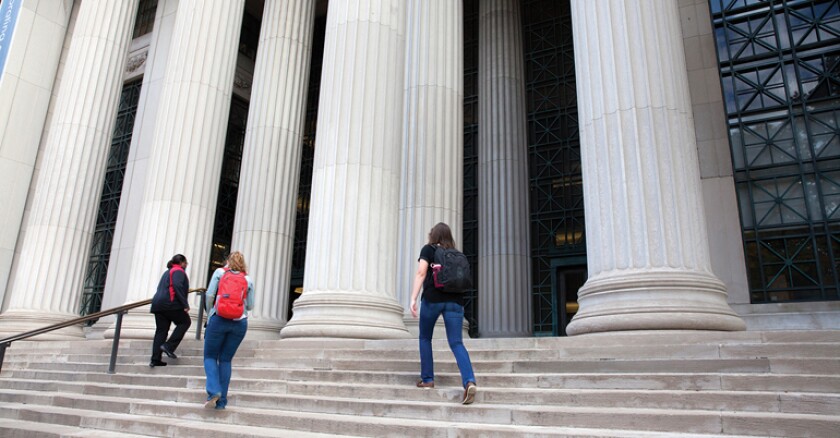Every state, of course, knows what it plans to spend on higher ed each year, which generally accounts for about 10 percent of a state's budget. But few places track what they give up in tax breaks to help defray the cost of college for taxpayers, according to a new Pew Charitable Trusts report. Since many states default to the federal government's qualifications for these tax breaks, most don't know how vulnerable they are to changes at the federal level.
Phillip Oliff, one of the report's authors, says states should be regularly looking at both sides of the equation -- tax breaks and direct spending -- when considering how they pay for and promote education policy. "Then they can think about whether the full package of support is being used as effectively as possible to promote their policy goals," he says.
In a review of the 41 states and the District of Columbia that tax personal income, just nine states and the district assess their higher education-related tax expenditures. These expenditures include special deductions, tax credits and exemptions that allow tax filers to reduce their declared taxable income. California, for instance, spent $10.8 billion on higher education in 2014, the year for which Pew has comprehensive data. But its estimated foregone revenue from higher education tax expenditures nudges the state's total cost up to $11.2 billion.
The report comes at a time when state spending on higher education has decreased by a collective $10 billion since the Great Recession. That's had a direct impact on the cost of college as institutions have had to cover the shortfall. Tuition has increased on average by 33 percent over the past decade, according to the Center on Budget and Policy Priorities (CBPP). In Alabama, California, Florida, Georgia, Hawaii and Louisiana, tuition has spiked more than 60 percent; in Arizona, it has nearly doubled.
Meanwhile, Michael Mitchell, a CBPP senior policy analyst, has seen public institutions shift more toward merit-based scholarships and away from need-based simply because the former is likelier to attract students who can afford to pay more tuition.
Decreased spending and this shift toward merit scholarships are having a disproportionate impact on lower-income students. And that's where knowing how much a state spends on higher ed and how much it gives away in tax breaks is important, says Oliff. Looking at which federal higher education tax breaks are automatically passed on to a state is a good place to start, as most of states' foregone revenue comes from these income credits and deductions. Lawmakers should ask themselves if the total spending package is achieving their policy goals, or whether credits or spending should be shifted.
Simplifying a state's tax and deductions could also help make college more affordable for students. Given the current complexity in most states, it can be hard for students to accurately assess the indirect financial help they get from credits and deductions, Mitchell says. That makes it difficult for them to determine whether they can afford college. "There's research that shows students very much overestimate the final price they pay for college, and part of the reason is that it's such a labyrinth to navigate," he says. "The more simplicity policymakers can bring to the maze, the easier it is for students -- whose parents may not have gone to college themselves -- to navigate that."









